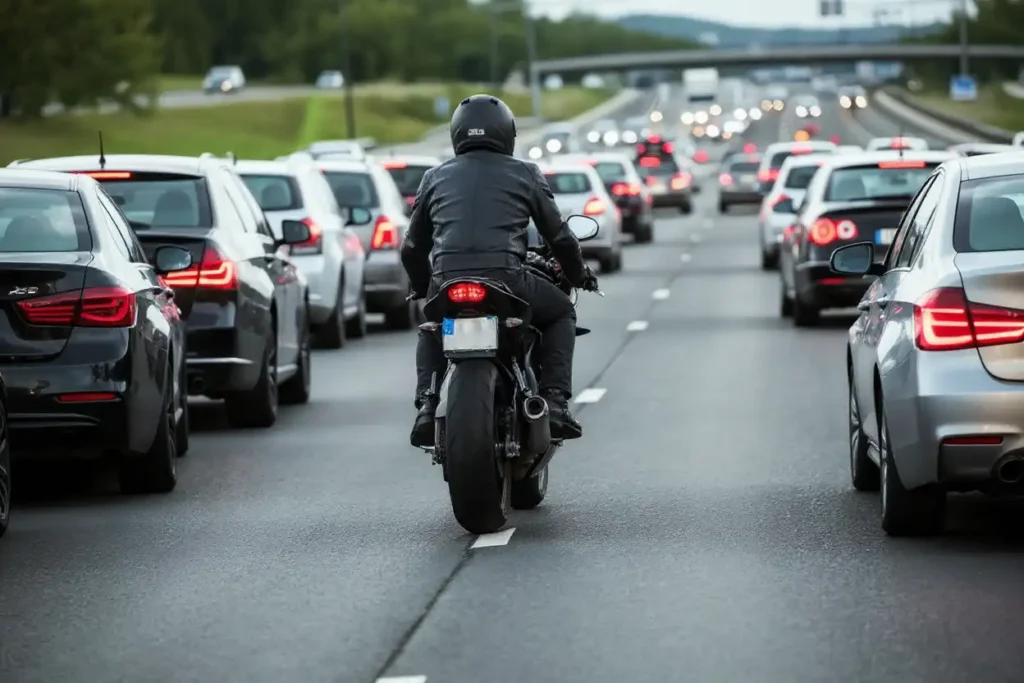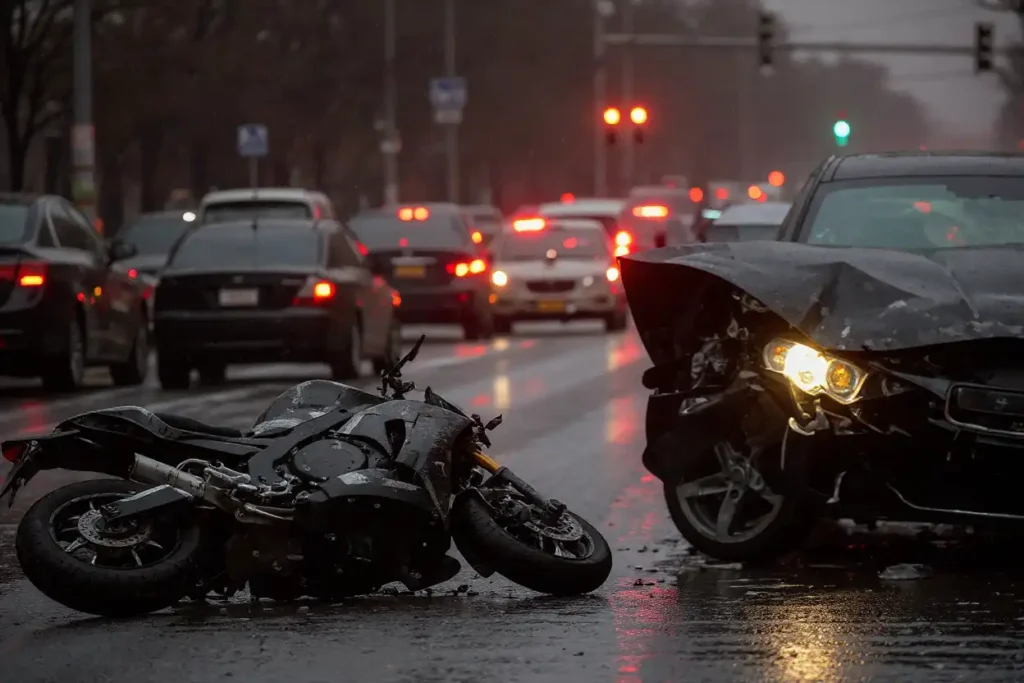Lane-splitting has long been a hot topic in California traffic law. As the only state where it is explicitly legal, California allows motorcyclists to ride between lanes of slow or stopped vehicles. In Los Angeles, riders often use lane-splitting to avoid traffic gridlock on the I-5, I-10, and 405 freeways. But with growing congestion, lane-splitting crashes are on the rise. For victims, understanding lane-splitting motorcycle accidents Los Angeles 2025 is critical for protecting safety and securing fair compensation.
What Is Lane-Splitting?

Lane-splitting, sometimes called white-lining or filtering, occurs when a motorcycle moves between two lanes of traffic. Riders use this maneuver to save time, reduce exposure to rear-end crashes, and escape congested areas. Supporters argue that lane-splitting improves traffic flow and reduces rider risk, while critics claim it increases accident dangers.
California Lane-Splitting Laws in 2025
California officially legalized lane-splitting in 2017. However, the California Highway Patrol (CHP) continues to provide safety guidelines, updated most recently in 2025:
- Lane-splitting is safest when traffic moves at 40 mph or less.
- The speed difference between the motorcycle and nearby cars should not exceed 15 mph.
- Riders should avoid lane-splitting between large trucks, buses, or wide vehicles.
- Lane-splitting is recommended between the two far-left lanes on multi-lane freeways.
While not binding laws, these guidelines shape how police officers and courts evaluate fault after an accident.
Why Lane-Splitting Accidents Are Increasing in Los Angeles
Los Angeles has the highest number of registered motorcycles in California, combined with some of the nation’s worst congestion. This combination fuels accident risks. Common causes of lane-splitting crashes include:
- Unsafe lane changes: Drivers shift lanes without checking mirrors or blind spots.
- Distracted driving: Phones and infotainment systems cause drivers to miss approaching riders.
- Aggressive driving: Some motorists deliberately block lane-splitting riders.
- Excessive speed: Riders splitting above CHP guidelines face greater accident risks.
- Sudden car door openings: Especially in slow-moving or stopped traffic on urban streets.
These risks make Los Angeles one of the most dangerous cities for lane-splitting riders.
Legal Challenges in Lane-Splitting Accident Cases

Because lane-splitting is legal, riders are not automatically at fault in accidents. However, proving liability is complex. California follows a comparative negligence system, meaning fault is divided between parties. Courts consider factors such as:
- Whether the rider was lane-splitting within CHP guidelines.
- Whether the driver failed to check blind spots or signaled improperly.
- Road and traffic conditions at the time of the crash.
- Video or witness evidence showing negligent behavior.
Even if riders share partial fault, they can still recover compensation, though damages are reduced by their percentage of responsibility.
Evidence That Strengthens Lane-Splitting Claims
Attorneys rely on strong evidence to prove fault in lane-splitting accident cases. Key examples include:
- Helmet cam or dashcam footage: Video showing safe lane-splitting practices.
- Police reports: Officer notes regarding traffic conditions and driver behavior.
- Witness testimony: Statements confirming how the crash occurred.
- Vehicle damage analysis: Collision points help establish direction of impact and responsibility.
Digital evidence, including GPS data and surveillance cameras, is increasingly common in 2025 accident claims.
Compensation for Lane-Splitting Accident Victims
Victims of lane-splitting crashes in Los Angeles may recover damages for:
- Medical expenses: Hospital care, surgeries, physical therapy, and future treatment costs.
- Lost wages: Current income losses and reduced earning potential.
- Pain and suffering: Emotional trauma and physical pain caused by the crash.
- Property damage: Motorcycle repairs or replacement.
- Wrongful death damages: Families of riders killed in accidents can seek compensation for financial and emotional loss.
Settlement values vary depending on injury severity, insurance coverage, and whether fault is disputed.
Insurance Company Tactics in 2025

Insurance companies often argue that lane-splitting is “inherently dangerous,” even though it is legal. Adjusters may try to reduce payouts by claiming the rider split lanes at unsafe speeds. Attorneys challenge these tactics by referencing CHP guidelines and accident statistics that support safe lane-splitting practices.
Safety Tips for Riders in Los Angeles
To reduce risk while lane-splitting in 2025, riders should:
- Follow CHP guidelines for speed and lane choice.
- Wear DOT-approved helmets and full protective gear.
- Use reflective clothing and headlights to stay visible.
- Avoid splitting at night or in poor weather conditions.
- Record rides with helmet cameras to preserve evidence in case of a crash.
These practices not only reduce accident risk but also protect riders legally if an accident occurs.
Conclusion
Lane-splitting motorcycle accidents Los Angeles 2025 are on the rise, fueled by congestion, distracted drivers, and aggressive road behavior. While lane-splitting remains legal, proving liability requires strong evidence and legal strategy. Riders injured in crashes should consult an experienced Los Angeles motorcycle accident attorney to navigate comparative negligence rules, challenge insurance disputes, and recover full compensation.
If you or a loved one has been injured in a lane-splitting crash, contact a motorcycle accident lawyer today. Skilled legal representation ensures your rights are protected and your recovery is supported in 2025.
